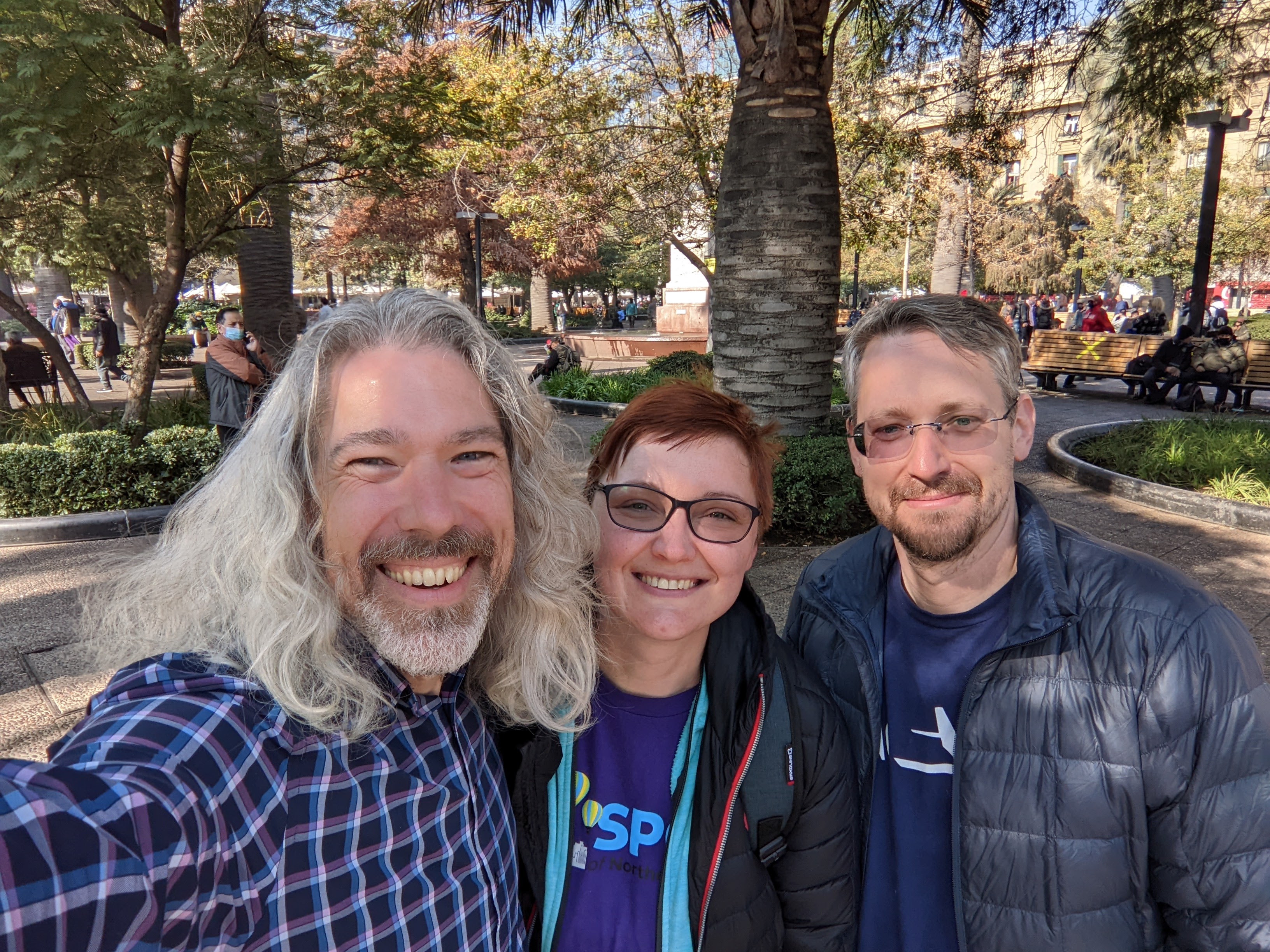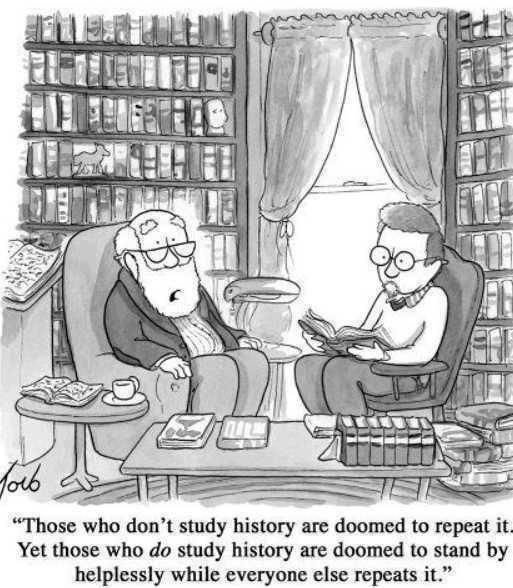30 May 2022
•
Personal
I was booked to fly from Denver to Santiago with a short layover in Atlanta. However, my flight from Denver was slightly delayed so i miss the Santiago leg and had to spend 24 hours in Atlanta (there is only one flight to Santiago per day). This turned out to be really nice. I took the opportunity to visit the Martin Luther King Jr National Historical Park. It was a Sunday so the museum, etc were closed but it is a interesting neighborhood to walk around.


After that i headed to the nearby Piedmont Park. There was a Jazz festival happening so I lazed about the park listening to Joe Alterman and some other artists that escape my memory until it was time to head the airport. All in all it was a great way to spend an unexpected visit to Atlanta.

Then i was on to Santiago. My flight arrived early the next morning so i connected with Joshua and Sophia and we started exploring Santiago starting with the Plaza de Armas.


Santiago is covered in beautiful street art which makes wandering around a real treat.

We ended the day watching a beautiful sunset from San Cristóbal Hill.

Tomorrow we are off to explore other parts of Chile.
06 Jan 2019
•
Personal
Esra and I at Neon Masquerade. The bands were awesome and black lights are always fun!

permalink
21 Sep 2018
•
Software Development
Once, long ago, i thought that schemas were great and that they could provide much value. Schemas hold the promise of declaratively and unambiguously defining message formats. Many improvements would be “easy” once such a definition was available. Automated low-code validations, automagically created high quality, verifiably correct documentation, clearer understanding of inputs, etc. I tried fiercely to create good schemas, using ever better schema languages (RelaxNG compact syntax, anyone) and ever more “sophisticated” tools to capture the potential benefits schemas.
At every turn i found the returns on investment disappointing. Schema languages are hard for humans to write and even harder to interpret. They are usually unable to express many real world constraints (you can only have that radio with this trim package, you can only have that engine if you not in California, etc). High quality documentation is super hard even with a schema. Generation from schema solves the easy part of documentation, explaining why the reader should care is the hard part. Optimizing a non-dominate factor in a process doesn’t actually move the needle all that much. Automated low-code validations often turned out hamper evolution far more than they caught real errors.
I wasn’t alone in my disappointment. The whole industry noticed that XML, with its schemas and general complexity was holding us back. Schemas ossified API clients and servers to the point that evolving systems was challenging, bordering on impossible. Understanding the implications of all the code generated from schemas was unrealistic for mere mortals. Schema became so complex that it was impossible to generate human interpretable documentation from them. Instead people just passed around megs of XSD files and call it “documentation”.
JSON emerged primarily as a reaction to the complexity of XML. However, XML didn’t start out complex, it accreted the complexity over time. Unsurprising the cycle is repeating. JSON schema is a thing and seems to be gaining popularity. It is probably a fools errand to try steming the tide but i’m going to try anyway.

What would it take for schemas to be net positive? Only a couple of really hard things.
Humans first
Schema languages should be human readable first, and computer readable second. Modern parser generators make purpose built languages easy to implement. A human centered language turns schemas from something that is only understandable by an anointed few into a powerful, empowering tool for the entire industry. RelaxNG concise syntax (linked above) is a good place to look for inspiration. The XML community never adopted a human readable syntax and it contributed to the ultimate failure of XML as a technology. Hopefully we in the JSON community can do better.
Avoid the One True Schema cul de sac
This one is more of a cultural and education issue than technical one. This principle hinges on two realizations
- A message is only valuable if at least one consumer can achieve some goal with that message.
- Consumers want to maximize the number goals achieved
However, consumers don’t necessarily have the same goals as each other. In fact, any two consumers are likely to have highly divergent goals. Therefore, they are likely to have highly divergent needs in messages. A message with which one consumer can achieve a goal may be useless to another. Therefore, designing a schema to be used by more than consumer is an infinite-variable optimization problem. Your task is to minimize the difference between the set of valid messages and the set of actually processable messages for every possible consumer! (See appendix A for more details) A losing proposition if there ever was one.
To mitigate this schema languages should provide first class support for “personalizing” existing schemas. A consumer should able to a) declare that it only cares about some subset of the properties defined in a producer’s schema and b) that it will accept and use properties not declared in a producer’s schema. This would allow consumers to finely tune their individual schemas to their specific needs. This would improve evolvability by reducing incidental coupling, increase the clarity of documentation by hiding all irrelevant parts of the producer’s schema, and improve automated validation by ignoring irrelevant parts of messages.
We as a community should also educate people in the dangers of The One True Schema pattern.
Conclusion
Designing schemas for humans and avoiding the One True Schema are both really hard. And, unfortunately, i doubt our ability to reach consensus and execute on them. Given that i think most message producers and basically all message consumers are better avoiding schemas for anything other than documents.
Appendix A: Where in i get sorta mathy about why consumers shouldn’t share schemas unless they have the same goals
I don’t know if this will help other people but it did help me clarify my thinking on this issue.
A particular consumer, C, needs messages to contain certain information to achieve its goal.
m = set of all messages
mC = {m | m in M, m contains info needed by consumer C}
For any particular schema there is some subset of all messages that are valid.
mV = {m | m in M, m is valid against schema S}
As the schema approaches perfection for consumer C the set of valid messages approaches the set of messages actually processable by the consumer.
mC = lim mV as S->perfectSchemaFor(C)
In practice, however, there is always some mis-match between the set of valid messages and the set of messages actually processable by the consumer. Some technically invalid messages contain enough information for the consumer to achieve its goal. Some technically valid messages will contain insufficient information. The mis-match may be due to bugs, a lack of expressiveness in the schema language or just poor design. The job of a schema designer is to minimize the mis-match.
Now consider a second consumer of these messages.
A particular consumer, D, needs messages to contain certain information to achieve its goal.
mD = {m | m in M, m contains info needed by consumer D}
The information needed by consumer D will, in general, be different from the information needed by consumer C. Therefore, the set of messages processable by C will, in general, not equal the set of messages processable by D.
The kicker: the perfect schema for consumer C is, in general, different from the perfect schema any other consumer. Minimizing the difference between mV and mC will tend to increase the difference between mV and mD.
perfectSchemaFor(C) ≠ perfectSchemaFor(D)
26 Apr 2018
•
Software Development
Fact: Supervisors fully serialize the startup of their children. Each child’s init/1 function runs to completion before the supervisor starts the next child.
For example, given modules ModuleA and ModuleB that implement both the init/1 callback and this supervisor:
Supervisor.start_link([
ModuleA,
ModuleB
], strategy: :one_for_one)
The ModuleA child process will be started and its init/1 function will run to completion before the ModuleB child process starts. This is true regardless of the strategy used.
so what?
This fact can often simplify application startup and error handling scenarios. For example, consider a situation where several processes need a token to interact with an API. The application must acquire this token on startup. If the token expires or the server revokes the token the application must acquire a brand new token and distribute it to all the processes.
We can implement that behavior simply and easily using serialization and appropriate crash handling strategy of a supervisor.
defmodule MyApi.TokenManager do
use GenServer
def init(_) do
token = fetch_token_from_api!()
{:ok, token}
end
def handle_call(:get_token, _from, token) do
{:reply, token, token}
end
end
defmodule MyApi.ThingDoer do
use GenServer
def handle_call(:do_thing, _from, _state) do
token = MyApi.TokenManager.get_token()
# do stuff with token; crash if it doesn't work
en
end
defmodule MyApi.OtherThingDoer do
use GenServer
def handle_call(:do_other_thing, _from, _state) do
token = MyApi.TokenManager.get_token()
# do stuff with token; crash if it doesn't work
en
end
Supervisor.start_link([
MyApi.TokenManager,
MyApi.ThingDoer,
MyApi.OtherThingDoer
], strategy: :one_for_all)
In this example MyApi.TokenManager.init/1 acquires the token before returning. That means the token is ready by the time MyApi.ThingDoer and MyApi.OtherThingDoer start. If at any point to the API server revokes the token, or it expires, the next thing doer to try to use it can just crash. That crash will cause the supervisor to shutdown the remaining children and restart them all beginning with MyApi.TokenManager which will acquire a new, working token.
With this approach MyApi.ThingDoer and MyApi.OtherThingDoer don’t need any specific error handling code around token management. The removal of situation-specific error handling logic makes them simpler and more reliable.
29 Mar 2018
•
Software Development
Through my work developing and consuming APIs i have come to value:
- evolvability over message and implementation simplicity
- self describing messages over reduced message sizes
- standards over bespoke solutions
- human readability over client simplicity
- uniformity over flexibility
I value the things on the right, but i value the things on the left more.
evolvability over message and implementation simplicity
APIs and the producers and consumers of APIs must be able to evolve over time. Evolvability inherently means that the message and implementations will be more complex. Designers and implementers must have forward compatibility in mind at all times. This forward compatibility mindset produces features that add value only after months, years or even decades of life. Having those features is more complex than not, but the return on those investments is worth the cost.
self describing messages over reduced message sizes
Embedding all the information needed to interpret a message simplifies client implementation and improves evolvability. However, embedding all that information necessarily increase the size of the message. For most APIs the additional data transfer is just not important enough to give up the benefits of self-describing messages.
standards over bespoke solutions
Standards allow reuse of code and of knowledge. Standards often encode hard-won practical experience about what works and what doesn’t. However, standard solutions often don’t fit as well as purpose-designed solutions to specific problems.
human readability over client simplicity
It is important that APIs be understandable by mere mortals. An average developer should be able to easily understand and explore an API without specialized tools. Achieving human readability while also honoring the other values often means that clients must become more complicated.
There should be a small number of ways to express a particular message. This makes consumer and producer implementations simpler. However, this means that existing APIs will likely be non-conformant. It also means that some messages will be less intuitive and human readable.
why now
There has been a fair bit of discussion in HTTP APIs hypermedia channel (get an invite) lately about hypermedia formats (particularly those of the JSON variety). Personally, i find all of the existing options wanting. I’m not sure the world needs yet another JSON based hypermedia format but the discussion did prompt me to try to articulate what i value in a format. The format is blatantly stolen from the agile manifesto.








